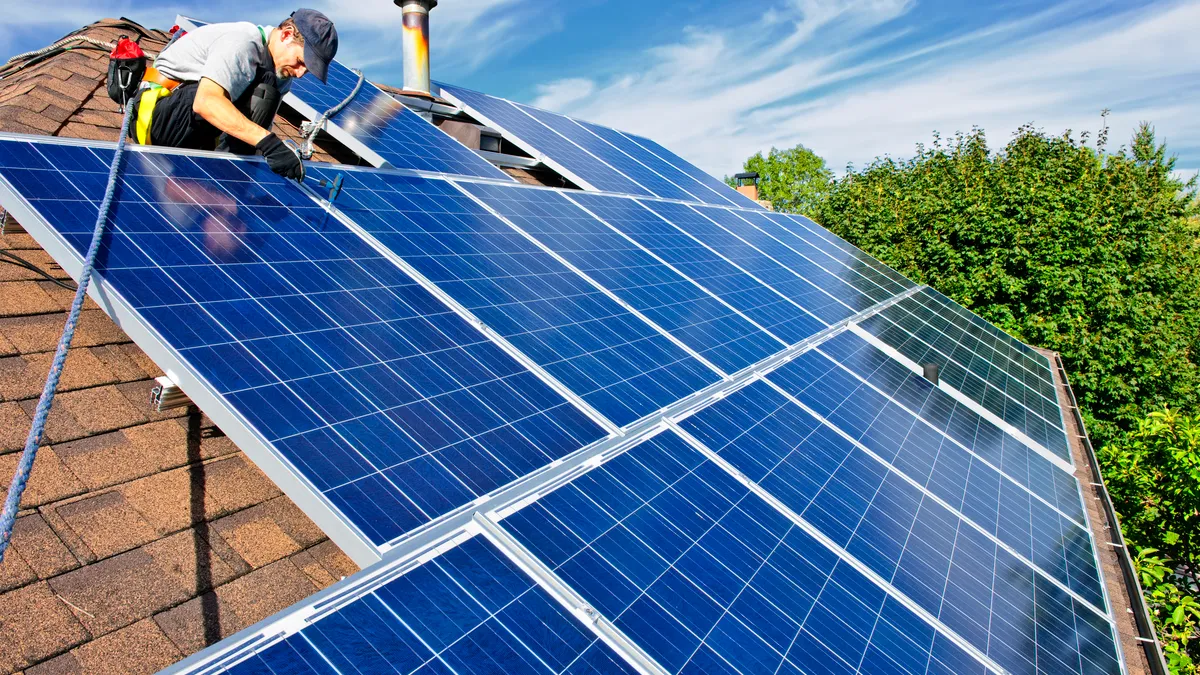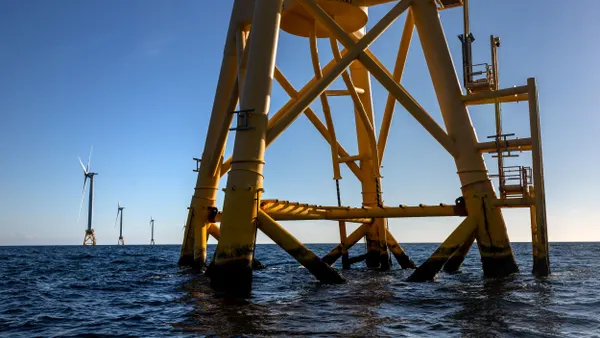Dive Brief:
- The passage of the Inflation Reduction Act could, over time, lead to a “renaissance in American solar manufacturing,” according to a roadmap laid out by the Solar Energy Industries Association to scale up the domestic solar manufacturing sector.
- SEIA expects that the Inflation Reduction Act will lead to new investments in domestic solar module, tracker, inverter and racking capacity within the next three years, and investments in solar ingot, wafer and cell capacity within the next five years.
- Domestic solar manufacturing is especially important given the global supply chain challenges that the industry has been facing in recent years, according to SEIA. “New production capacity can dramatically reduce shipping and import costs, which will insulate the U.S. solar and storage industry from global supply disruption and help secure the safety and reliability of the electric grid,” the association said in a statement.
Dive Insight:
While there does exist domestic capacity to manufacture metallurgical grade silicon, polysilicon, steel, aluminum and other materials for the solar sector, the U.S. solar supply chain still has “significant gaps,” according to SEIA’s roadmap. For instance, there is limited capacity to manufacture solar modules domestically, and none to build solar ingots, wafers or cells. Moreover, there are only three manufacturers of solar specialty glass within the U.S.
The law includes roughly $369 billion in funding for energy and climate measures over the next decade, including incentives and tax credits for clean energy, nuclear power, carbon capture, and electric vehicles.
SEIA’s recently released roadmap outlines how the industry can use this moment to build a strong manufacturing base. SEIA recommends that manufacturers first focus on building downstream production – including expanding domestic module manufacturing capacity – while factoring in demand for their products.
The roadmap also takes a look at workforce considerations, noting that building domestic manufacturing capacity could create permanent, high-wage jobs. In the short term, creating this workforce would require supportive immigration policies, according to SEIA. In the longer term, the industry will need “a readily available pool of production workers as well as solar-ready computer scientists, chemical engineers, electrical engineers, process engineers and more.”
“For the first time, the United States has industrial policy in place that will usher in a new era of clean energy manufacturing,” Abigail Ross Hopper, president and CEO of SEIA, said in a statement.
“If we follow the recommendations in the paper, we can grow the U.S. solar manufacturing workforce and put the solar and storage industry on a path to secure, sustainable and equitable growth for decades to come,” she added.
The U.S. manufacturing industry is far behind global leaders in regard to wind, solar and batteries, although less so for electric vehicles, Stoel Rives partner Morten Lund said in an email. But while the Inflation Reduction Act rewards increased domestic manufacturing, it is not clear that it meaningfully requires it, or that the financial incentives will be sufficient to drive it, he said.
“After a decade of tariffs have failed to drive meaningful increase in domestic solar manufacturing, there is no reason to assume that the financial incentives in the IRA will have a greater impact,” he said.















